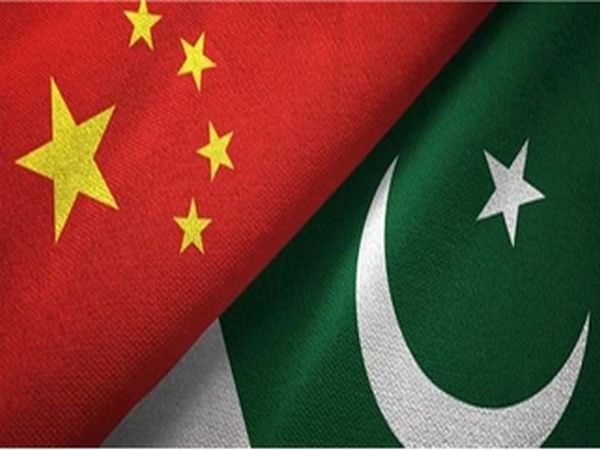New Delhi: Pakistan almost “certainly procures” foreign materials and technology for Weapons of Mass Destruction (WMD) from foreign suppliers and intermediaries, “very likely acquired primarily from suppliers in China”, the United States’ Defense Intelligence Agency (DIA) has said in its 2025 Worldwide Threat Assessment report.
The report, released earlier this month, also said sometimes these supplies are transshipped through Hong Kong, Singapore, Turkey and the United Arab Emirates.
The report says Pakistan perceives India as an “existential threat” and will continue to pursue its military “modernisation effort, including the development of battlefield nuclear weapons, to offset India’s conventional military advantage”.
The report has further said the “ongoing tensions along India and China’s Line of Actual Control border demarcation are capable of escalating quickly”.
Referring to the troop disengagement in Depsang and Demchok in Eastern Ladakh in October last year, it says “the disengagement did not resolve the longstanding dispute about border demarcation but reduced some tension still lingering” since the 2020 Galwan clash, with India considering China its “primary adversary” and viewing Pakistan as “an ancillary security problem to be managed despite cross-border attacks in mid-May by both India’s and Pakistan’s militaries”.
Notably, Pakistan deployed Chinese-supplied fighters such as JF-17 and J10C, PL-15E beyond-visual-range air-to-air missiles and Unmanned Aerial Vehicles (UAVs) against India during the military hostilities between 7 and 10 May. Besides, multiple reports indicate that Pakistan is expected to receive the fifth-generation J-35A fighter jet from China later this year.
Subsequently, the assessment states that Pakistan “primarily is a recipient” of Beijing’s “economic and military largesse” and its forces conduct multiple military exercises with Chinese forces every year.
“Foreign materials and technology supporting Pakistan’s WMD programs are very likely acquired primarily from suppliers in China and sometimes are transshipped through Hong Kong, Singapore, Turkey and the United Arab Emirates,” the report said.
India had launched Operation Sindoor in the early hours of 7 May, targeting nine terror training camps in Pakistan and Pakistan-occupied Kashmir (PoK) associated with Lashkar-e-Taiba (LeT) and Jaish-e-Mohammad (JeM). The strikes came in retaliation to the 22 April terror attack in Pahalgam, carried out by terrorists trained and backed by Pakistan, which claimed the lives of 26 tourists.
Pakistan reached out to Indian Director General of Military Operations (DGMO) Lt Gen Rajiv Ghai 10 May to propose cessation of hostilities.
The report released just the day after describes the escalation in detail, stating it included “rounds of missile, drone and loitering munition attacks, and heavy artillery fire, by both militaries from 7 to 10 May”.
Also Read:All about J-35A, the Chinese fifth-generation stealth fighter Pakistan plans to acquire
On China
A substantive portion of the DIA report focuses on China’s rapid military and nuclear modernisation. The report estimates that China’s operational nuclear warhead count has surpassed 600 and could exceed 1,000 by 2030. These warheads will “be maintained at higher readiness levels to enable faster response times during conflicts,” it adds.
On countering Beijing’s expanding influence, it says that India is “boosting its global leadership role” by advancing bilateral defence partnerships in the Indian Ocean region and increasing its participation in multilateral forums.
These include the Quadrilateral Security Dialogue (QUAD) with the US, Australia and Japan; the BRICS (Brazil, Russia, India, China, and South Africa); the Shanghai Cooperation Organisation and the Association of Southeast Asian Nations (ASEAN).
The paper also highlights India’s strengthening of its nuclear triad and deterrence capabilities in 2024 by “conducting the test of the nuclear-capable Agni-I Prime medium range ballistic missile (MRBM) and the Agni-V multiple independently targetable reentry vehicle while also commissioning its second nuclear-powered submarine”.
India had commissioned its second nuclear-powered ballistic missile submarine (SSBN), INS Arighaat, in August last year.
The DIA further outlines India’s focus on building indigenous defence capabilities through the “Make in India” initiative, aimed at modernising the armed forces and mitigating supply chain risks.
The assessment also says that, despite a reduction in arms procurement from Moscow, India will maintain its relationship with Russia “since it views its ties to Russia as important for achieving its economic and defence objectives”.
It adds that India continues to rely on “Russian-origin spare parts to sustain a significant portion of its tank and fighter aircraft inventory”, which has been described as “the backbone of its military’s ability to counter perceived threats from China and Pakistan”.
(Edited by Ajeet Tiwari)






